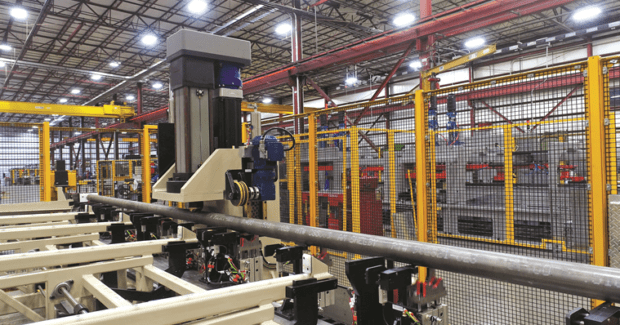AI-Driven Straightening System Shrinks Cycle Times Up to 80%
Use Coldwater Machine’s solution to straighten tubes and bars made from many types of metals automatically, without operator intervention. Once sensors create a profile of the tubes or bars, a servo press bends the material over the servo’s length till straightening requirements are achieved.
Posted: June 5, 2020
An automated, all-servo-controlled Tube and Bar Straightening System for carbon steel, stainless, aluminum, copper, brass and other materials is available from Coldwater Machine (Coldwater, OH) . These solutions incorporate artificial intelligence that automatically adapt by learning different part types without requiring operator intervention. They have helped reduce cycle times up to 80% compared to traditional approaches.
Many tubes and pipes produced for precision applications today lack sufficient straightness for finishing operations like machining or centerless grinding. This poses a problem for manufacturers that rely on manually intensive operations using traditional straightening presses to achieve straightness. Compounding this challenge is the shortage of skilled labor for these operations as well as a lack of process repeatability. This can lead to quality problems downstream where vibrations during grinding can lead to inconsistent results, not to mention potentially damaging centerless grinding wheels – further adding to costs.
How It Works
Bundles of tubes/bars are loaded onto a staging deck and then automatically fed to the straightening equipment. In the straightening process, the bar stock is rotated 360 degrees while sensors measure the bar at multiple data points along its length to create a profile. This data is sent to the PLC where it is compared to the straightness specification in order to determine where it needs to be corrected.
A servo press, mounted to a servo-controlled rail, is positioned to the indicated location determined by the sensors and then bends the bar/tube repeatedly over its length to bring it within tolerance. This process continues until the straightness requirements are achieved. As a final check, the tube is then rotated again to collect the data points to confirm that the bar is within specification. Depending on the customer’s process, bars or tubes may then be automatically or manually transferred to other operations.
Benefits of the system include:
- Repeatable process for improved quality
- Reduced requirements for skilled operators
- Decreased cycle times by 60-80% as compared to other methods
- Ability to handle different diameters and lengths over 300 inches
- Easy maintenance with all-servo control
- Adaptability to varying tube lengths and outer diameter requirements and part batches.




